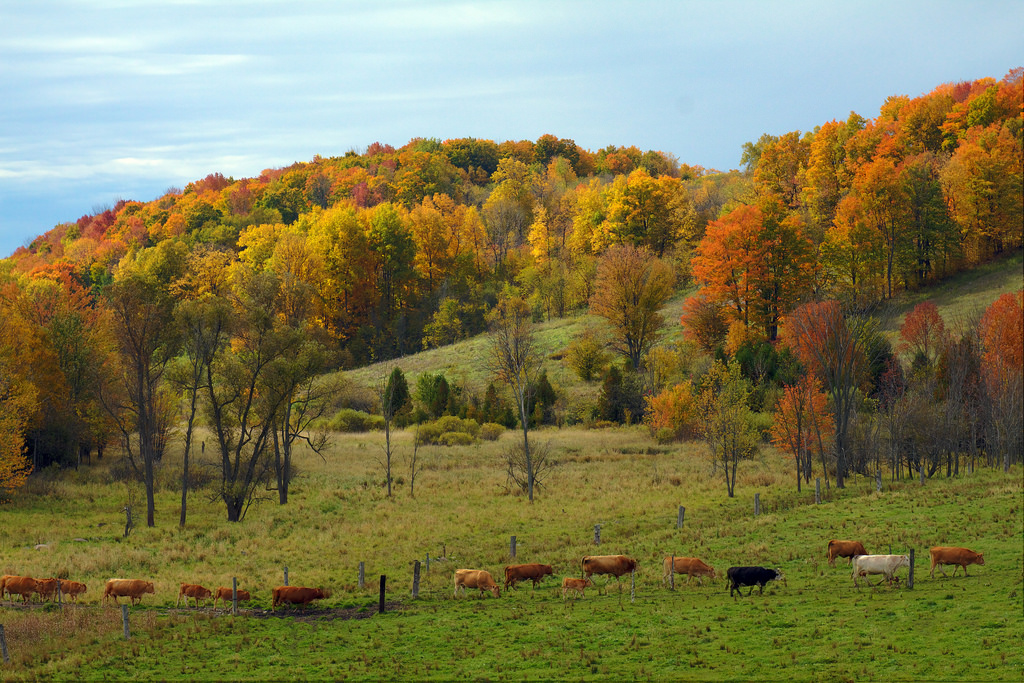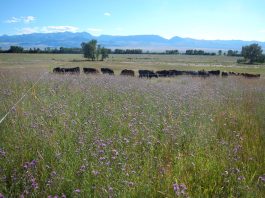
Jeff Rasawehr is a pea promoter. He started planting peas as cover crops about 8 years ago. Of his early experience he says, “I would warn any pea practitioners that you will shake your head some days in the first 5 years.” Winter kill and figuring out planting procedures made getting them going tough. But he kept at it because, when it comes to fixing nitrogen in the soil, puny peas pack a powerful punch. Here’s what he’s learned along the way.
Pea Pluses
Peas collect nitrogen and improve the soil for future crops. In just 7 to 8 days, the peas germinate and start setting roots which provides exudates to the soil. When they are just 2 to 3 inches tall they already have root nodules to begin doing this. The peas’ roots interact with rhizobia bacteria in the soil to develop these root nodules (little bumps) for nitrogen fixation. If you leave the peas (shoots and roots) in the field, the N will be there for plants in the future, providing about 100-150 lbs of N per acre. Since it costs about $50/acre to plant the peas, they are similar in cost to adding N fertilizer, but they add more to the soil health than your average sack of chemical N.
Peas also pack some powerful protein for your livestock. If you harvest peas as they begin flowering, their protein is over 20%. Peas also can provide a lot of forage. While most of the work peas do in the soil occurs before the bolting period, their benefit as a forage happens when they bolt. Peas can go from 6-8″ high to waist high in just 2 short weeks, creating fields of high value fodder. When this might happen for you depends on where you live and can be quite variable depending on fall and spring temperatures. In Ohio, where Jeff farms, it takes about 80 days from an August 1 planting.

When using peas in a grazing situation, Jeff says they will disappear fast, because they are very palatable. He’s found they are the number one choice for grazing animals. Keep this in mind for your grazing timing so that you can get the most from your crop.
Once he cuts and bales his pea/oat pasture, that crop is finished for the season. Jeff is fine with that because he knows he’s improved the soil. As evidence of this he notes that his hay production is way above his neighbors.
Persnickety Pea Planting Procedures
 Peas have to be touching the soil to germinate. That means they can’t really be broadcast into pasture. Instead, they require a seed drill. Right now, Jeff is mixing peas and oats together for fall forage. He seeds 50-60 pounds per acre of peas with 30 pounds per acre of oats. Then he bales it for baleage in the fall. He continues using them as part of his planting mixtures until November 1, though sometimes he uses as little as 5 pounds per acre.
Peas have to be touching the soil to germinate. That means they can’t really be broadcast into pasture. Instead, they require a seed drill. Right now, Jeff is mixing peas and oats together for fall forage. He seeds 50-60 pounds per acre of peas with 30 pounds per acre of oats. Then he bales it for baleage in the fall. He continues using them as part of his planting mixtures until November 1, though sometimes he uses as little as 5 pounds per acre.
The oats are an important part of turning this forage into bales. Without this coarse grass, the viney peas will wrap around the cutting blades of your equipment. In that case, Jeff recommends taking a case of beer with you because it will drive you to drink.
As noted earlier, the timing of pea planting is important. If you’re looking for spring forage from over-wintered peas, keep in mind that if the peas bolt before winter they won’t survive until spring. In addition, if they’re less than 2 inches tall when winter arrives, they’ll also die off. In fact, Jeff says that the pea is so persnickety that anyone who tells you his planting made it through the winter is probably a fibber.
Pea Products and Prices
You can choose from a number of pea varieties. Jeff says that lots of folks use Windham peas. That variety has traction in the market, so customers reorder it. His experience is that Windham germinates at about a 70% rate, especially because it is getting planted during the toughest times of year. That’s the timing for planting most cover crops – in the tiny window of the spring or the fall. It doesn’t make it easy, but it’s worth it.
He’s currently looking at “Lynx” peas. It’s a new variety, and there will be a finite supply this year, but based on what he’s learned so far it could be an improvement over other options. It has been bred to have better winter durability. Prices for the Lynx variety run about $0.84-0.85/lb and he doesn’t expect them to go down. Windham prices have been higher still, and are selling out.
Give Peas a Chance
 If you’re thinking of adding peas to your pasture mix, Jeff recommends adjusting your expectations. Your highest expectations might not pan out and there are going to be hiccups at the outset. But stick with it. The pea is an amazing part of the cover crop equation. The first year, even if they don’t grow very much, there’s a lot of root activity going on. So even if you don’t get forage production in the first year, you’ve added a lot of fertility to your soil. The harvest or the grazing is just the bonus.
If you’re thinking of adding peas to your pasture mix, Jeff recommends adjusting your expectations. Your highest expectations might not pan out and there are going to be hiccups at the outset. But stick with it. The pea is an amazing part of the cover crop equation. The first year, even if they don’t grow very much, there’s a lot of root activity going on. So even if you don’t get forage production in the first year, you’ve added a lot of fertility to your soil. The harvest or the grazing is just the bonus.
If you’d like to learn more about peas for your pasture, check out Center Seeds. You can contact Jeff and he’ll be happy to talk to you. Here’s his number: 419-305-0187.




